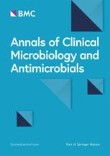|
Medicine by Alexandros G. Sfakianakis,Anapafseos 5 Agios Nikolaos 72100 Crete Greece,00302841026182,00306932607174,alsfakia@gmail.com,
Αρχειοθήκη ιστολογίου
-
►
2023
(272)
- ► Φεβρουαρίου (141)
- ► Ιανουαρίου (131)
-
►
2022
(2066)
- ► Δεκεμβρίου (80)
- ► Σεπτεμβρίου (170)
- ► Φεβρουαρίου (190)
- ► Ιανουαρίου (203)
-
►
2021
(7399)
- ► Δεκεμβρίου (186)
- ► Σεπτεμβρίου (472)
- ► Φεβρουαρίου (851)
-
▼
2020
(2517)
- ► Δεκεμβρίου (792)
-
▼
Νοεμβρίου
(1101)
-
▼
Νοε 22
(50)
- Ambition for Self and for Specialty: Emery A. Rove...
- Targeting Endothelial Dysfunction in Acute Critica...
- Trends and Outcomes in Pediatric Patients Undergoi...
- Systemic Inflammatory Response Syndrome After Surg...
- Perioperative Renoprotection: General Mechanisms a...
- Perioperative Renoprotection: Clinical Implications
- Perioperative Management of Children on Ketogenic ...
- An Implementation-Effectiveness Study of a Periope...
- Similarly low risk of hepatocellular carcinoma aft...
- Review article: current gaps and opportunities in ...
- Ex vivo infection of murine precision-cut lung tis...
- First‐line cetuximab plus chemotherapy for unresec...
- Comparative Efficacy of Angiotensin II Type 1 Rece...
- Pharmacoenhancement of Low Crizotinib Plasma Conce...
- Iron accumulation in the choroid plexus, ependymal...
- The Glasgow Microenvironment Score associates with...
- A case-control study to evaluate the impact of the...
- Cysteine metabolic circuitries: druggable targets ...
- Tumour‐only sequencing for oncology management: ge...
- Analysis of Mutational Signatures with YAPSA (Yet ...
- Extended cubic B‐spline collocation method for sin...
- Moving the dial on prenatal stress mechanisms of n...
- Are We Ready for Bariatric Surgery in a Liver Tran...
- Extramedullary Hematopoiesis in Adrenal Incidental...
- Efficacite et innocuite des agents antiviraux cont...
- Mortality among patients with frequent emergency d...
- Genomic Destabilization and its Associated Mutagen...
- NQO1 promotes an aggressive phenotype in hepatocel...
- Tick species from Africa by migratory birds: a 3-y...
- Finding incident cancer cases through outpatient o...
- Revisiting thoracic kyphosis: a normative descript...
- Comparative Analysis of Indicators of the Early St...
- Clinical Genetic Characteristics of Epilepsy Due t...
- EEG Characteristics during Short-Term Spontaneous ...
- Cross-Correlation and Coherence Analysis of Electr...
- Absorbed dose simulation of meta - 211 At-astato-b...
- Evaluation of different airway tests to determine ...
- Provider confidence in the telemedicine spine eval...
- Problems with Early Systematic Reviews: The Case o...
- Incidence, impact and risk factors for multidrug-r...
- Sagittal imbalance and symptoms of depression in a...
- Application of an attention U-Net incorporating tr...
- Evaluating the Relationship Between Post Traumatic...
- Numerical investigation of patient-specific thorac...
- Molecular Cloning and Differential Gene Expression...
- Molecular detection and characterization of tick-b...
- Hyalomma anatolicum resistance against ivermectin ...
- Midterm results of homografts in pulmonary positio...
- Review of acute kidney injury and continuous renal...
- Are We Ready for Bariatric Surgery in a Liver Tran...
-
▼
Νοε 22
(50)
- ► Σεπτεμβρίου (21)
- ► Φεβρουαρίου (28)
-
►
2019
(12076)
- ► Δεκεμβρίου (19)
- ► Σεπτεμβρίου (54)
- ► Φεβρουαρίου (4765)
- ► Ιανουαρίου (5155)
-
►
2018
(3144)
- ► Δεκεμβρίου (3144)
Ετικέτες
Πληροφορίες
Κυριακή 22 Νοεμβρίου 2020
Ambition for Self and for Specialty: Emery A. Rovenstine and the Politics of Organized Anesthesia, 1937–1947
Targeting Endothelial Dysfunction in Acute Critical Illness to Reduce Organ Failure
|
Trends and Outcomes in Pediatric Patients Undergoing Scoliosis Repair: A Population-Based Study
|
Systemic Inflammatory Response Syndrome After Surgery: Mechanisms and Protection
|
Perioperative Renoprotection: General Mechanisms and Treatment Approaches
|
Perioperative Renoprotection: Clinical Implications
|
Perioperative Management of Children on Ketogenic Dietary Therapies
|
An Implementation-Effectiveness Study of a Perioperative Delirium Prevention Initiative for Older Adults
|
Similarly low risk of hepatocellular carcinoma after either spontaneous or nucleos(t)ide analogue‐induced hepatitis B surface antigen loss
|
Review article: current gaps and opportunities in HBV prevention, testing and linkage to care in the United States—a call for action
|
Ex vivo infection of murine precision-cut lung tissue slices with Mycobacterium abscessus: a model to study antimycobacterial agents
|
Αναζήτηση αυτού του ιστολογίου
! # Ola via Alexandros G.Sfakianakis on Inoreader
-
Does CBD Oil Lower Blood Pressure? This article was originally published at SundayScaries." Madeline Taylor POSTED ON January 13, 20...
-
Abstract Purpose Clinicians must balance the risks from hypotension with the potential adverse effects of vasopressors. Experts have rec...










